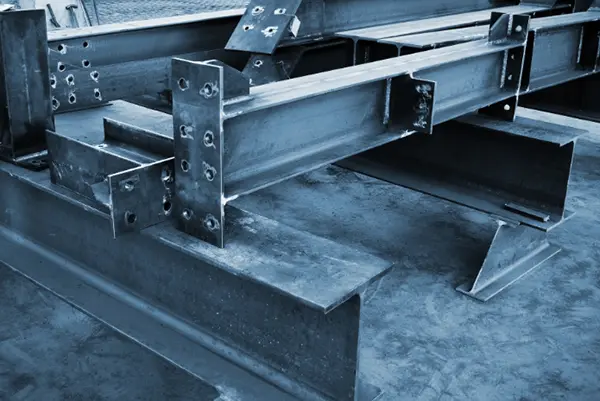Metal beams are fundamental components in the construction industry, known for their strength, durability, and versatility. They are used in a wide range of applications, from building skyscrapers to supporting bridges and infrastructure projects. This article explores the various uses of metal beams, highlighting their importance and the benefits they bring to different construction projects.
Structural Support in Buildings
One of the primary uses of metal beams is to provide structural support in buildings. Steel beams, in particular, are favored for their ability to support heavy loads and span large distances without sagging. They form the skeleton of many modern buildings, from residential homes to commercial skyscrapers.
- Skyscrapers and High-Rise Buildings: The strength and durability of steel beams make them ideal for constructing tall buildings. They can support the immense weight and withstand the stresses of wind and seismic activity, ensuring the safety and stability of the structure.
- Residential Construction: In residential buildings, metal beams are often used to support floors, roofs, and walls. They provide a solid framework that can accommodate various architectural designs and allow for open floor plans with fewer support columns.
- Industrial Buildings: Factories, warehouses, and other industrial buildings rely on metal beams for their structural integrity. These beams can support heavy machinery, overhead cranes, and large storage areas, ensuring the building can handle the demands of industrial operations.
Bridges and Infrastructure
Metal beams play a crucial role in the construction of bridges and other infrastructure projects. Their ability to bear heavy loads and resist environmental stresses makes them essential for these applications.
- Bridges: Steel beams are commonly used in bridge construction due to their high strength-to-weight ratio. They can span long distances and support the weight of vehicles, pedestrians, and sometimes even trains. The flexibility and durability of metal beams also allow bridges to endure dynamic loads and environmental factors such as wind and water currents.
- Highways and Overpasses: Metal beams are integral to the construction of highways and overpasses, providing the necessary support for these elevated structures. They help ensure the safety and longevity of transportation infrastructure, accommodating heavy traffic and weather conditions.
- Tunnels and Subways: In underground construction, metal beams are used to support tunnels and subway systems. They provide the necessary structural strength to prevent collapse and ensure the safety of commuters and workers.
Industrial and Commercial Applications
Beyond building and infrastructure projects, metal beams are utilized in various industrial and commercial applications. Their strength and versatility make them suitable for a wide range of uses.
- Cranes and Heavy Machinery: Metal beams are essential components in the construction of cranes and other heavy machinery. They provide the necessary support and stability to lift and move heavy loads, ensuring the safety and efficiency of industrial operations.
- Storage Racks and Shelving: In warehouses and retail spaces, metal beams are used to construct storage racks and shelving units. These structures can support significant weight, making them ideal for storing heavy goods and equipment.
- Marine and Offshore Structures: Metal beams are also used in the construction of marine and offshore structures, such as oil rigs and shipping docks. Their resistance to corrosion and ability to withstand harsh marine environments makes them a reliable choice for these applications.
Renewable Energy Projects
Metal beams are increasingly being used in renewable energy projects, such as wind farms and solar panel installations. Their strength and durability make them suitable for supporting renewable energy infrastructure.
- Wind Turbines: The towers and support structures of wind turbines are often constructed using metal beams. These beams provide the necessary height and stability to capture wind energy efficiently.
- Solar Panel Mounting Systems: Metal beams are used to create mounting systems for solar panels, ensuring they are securely fixed and optimally positioned to capture sunlight.
Advantages of Metal Beams
The widespread use of metal beams in construction and other industries is due to several key advantages:
- Strength and Durability: Metal beams can support heavy loads and withstand environmental stresses, making them ideal for a wide range of applications.
- Versatility: Metal beams can be customized to fit various design requirements and applications, offering flexibility in construction and engineering projects.
- Longevity: The durability of metal beams ensures a long service life, reducing the need for frequent repairs or replacements.
- Recyclability: Metal beams are often made from recyclable materials, making them an environmentally friendly choice for sustainable construction.
Conclusion
Metal beams are indispensable components in modern construction, offering strength, durability, and versatility. They are used in a wide range of applications, from building skyscrapers and bridges to supporting industrial and renewable energy projects. The advantages of metal beams, including their load-bearing capacity, adaptability, and longevity, make them a preferred choice for engineers and architects worldwide. As construction and technology continue to advance, the use of metal beams will remain crucial in building the infrastructure of the future.
Post time: Jul-24-2024




